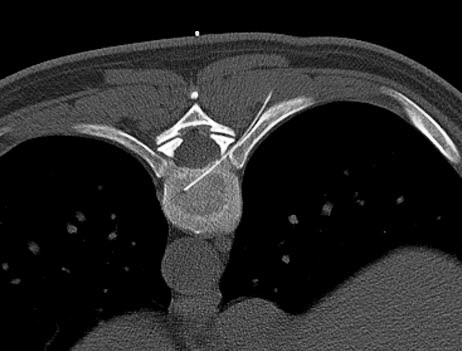Discography is done. I can't say enough good things about Dr. Reul. I have heard so much about how difficult and risky thoracic discography is. Some of the doctors I know who do discography warned me against it. When they found out that I was having it with a doctor with a great deal of experience with CT guided discography, they were more relaxed.
Having been in the procedure room observing more than 50 discographies, I have seen many that were very well done, and some that were not so well done. This was my fifth discography and my 11th level tested. As with all the two other needle procedures I had with Dr. Reul there was no sedation. However none of the past procedures were discographiy.
This procedure may have been the easiest of all the needle procedures I've experienced. Dr. Reul's caring, skill and experience are amazing. The pain I experienced on needle placement was very minor. He would get the needle close to where he wanted and take an image. He'd adjust the needle placement and repeat the process. There was not an intense pain when he penetrated the annulus as I have felt on other discographies. I was surprised to learn when he was all the way into the disc.
When he pressurized the disc, I felt a low-level pressure. At times I felt a very momentary sharp pain that shot horizontal across my ribs. People with thoracic problems will know that pain. However, none of what I felt was "my pain". My notes say 5 - 6 out of 10 NON concordant pain. Negative test.
I didn't know whether to be happy or sad. I'm glad that I'm not looking at thoracic fusion. I'm sorry that we still don't know what the problem is. Dr. Reul suggests going back to the facets. I'll write more later. I don't want to type a lot now.
Here are some of the images from today. The post-disco CT shows a pretty typical degenerated disc's distrubution of the contrast. The red arrows point to an accumulation in the 'sub ligamentous' space. The disc is herniated with an open annular tear. However the herniation is 100% contained by the posterior longitudinal ligament.

Note how narrow and curved the space where he needs to get the needle through is. This is why this should only be done with CT guidance and by someone with a great deal of experience. You may ask, "how can a doctor gain the experience?" The answer is, ON SOMEONE ELSE!
Mark
